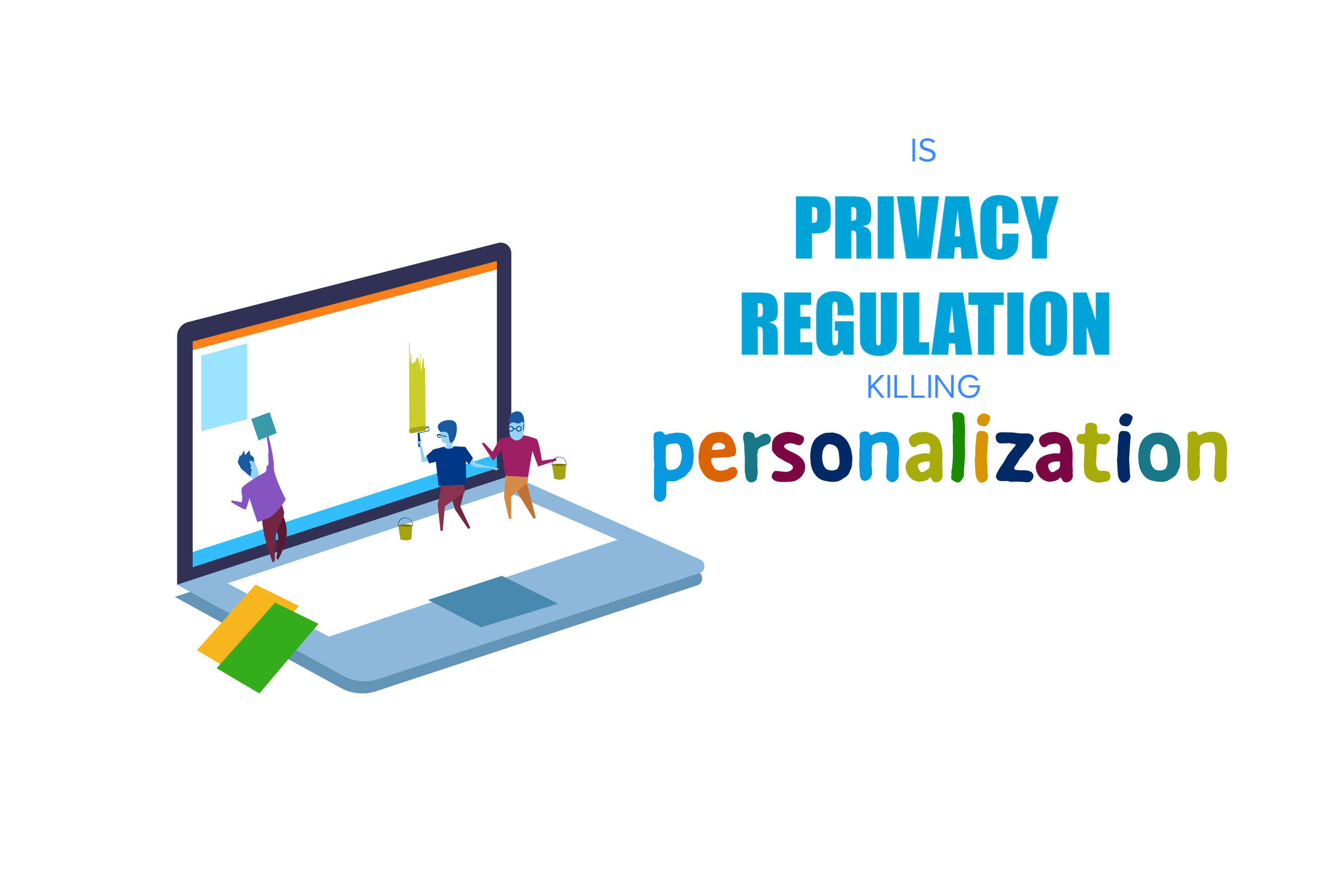
Summary
According to Gartner, and others, personalisation is key to survival in the cut-throat world of digital retail. With conversions to sale frequently in the low single digit percentages for many retailers they have to optimise conversion to survive and thrive.
However, now, the rise of privacy legislation has serious implications on companies’ ability to use personalisation effectively. According to a recent ruling by the ECJ the use of an individual’s purchase profile, even if aggregated, to optimise the purchase journey of another individual requires informed consent. To be specific, under GDPR, Personal Data is expanded to include direct or indirect identifiers, such as an IP Address (source).
What that effectively means is that buttons such as ‘Other users who browsed this item then bought this’ type messaging becomes very problematic if the ‘Other users’ decline to approve the use of their data for such ‘Marketing’ purposes. This is a big problem if your personalisation is only based on this approach because you might be in breach of legislation and have to switch it off.
Personalisation - Why ?
Personalisation has been called Digital Merchandising or Digital Personal Shopping. However, what it really means to the shopper is focus on their wants and needs. A shopper searching for a casual shirt, for example, doesn’t want to see 200 variants spread over four pages.
At the same time, retailers are pushed to increase their catalogues of products in order to satisfy the breadth of their customers tastes. So, we come to a rather intriguing paradox whereby to satisfy a broader range of customers you need a larger catalogue of products but, if you aren’t very careful, the sheer scale of the catalogue now becomes overwhelming and conversion suffers.
Looking at aggregated (and approved for such use of course) data the result is that the Checkout Basket becomes a kind of favourites library with users putting in all the products that might meet their needs and then deciding. However, the data tells us that where this happens it results in lower conversion to sale … the highest conversion to sale occurs where there are a smaller number of items in the checkout basket. What appears to be happening is that the ‘intentionality’ is decreasing … and abandonment therefore increases.
So, personalisation becomes key. If you can quickly meet a shopper’s needs and deliver the ideal products for them then conversion increases dramatically. In some cases, we’ve seen clients achieve increases of 4X per user although admittedly this is an outlier and we’re usually around 30%-60%.
Essentially, at any one point in time, instead of presenting the entire catalogue of such items you’re presenting the most likely candidates that will meet the user’s needs and then refining that based on their feedback. Just like that personal shopper who suggest you look at shirts a, b or c from their catalogue of hundreds.
The Data Privacy Issue
The issue is simple. In order to decide the shorter list of products that will be displayed to a shopper a digital retailer will usually use personalisation technology that relies on aggregate data from other users. Profiles are matched and the products that users with similar profiles liked are the candidate offerings presented to the user.
However, this now requires the consent of such users … their data is effectively being used for ‘Marketing’ and their explicit and active consent needs to be sought before that’s allowed. So, no, you CAN’T use other users purchase profiles to decide what to present unless those users have given their consent for their data to be used in this way.
Of course, technically, one can argue that this was always the case. However, prior to GDPR and other privacy legislation, consent could be inferred by the use of the site so it was largely immaterial. And sites’ privacy statements usually also made it clear that anonymised aggregated data could be collected and used. The big change is that positive, active consent must now be sought … a button has to be clicked or a box checked to permit use of data. And, unsurprisingly, this has drastically reduced the number of data profiles that can now be collected and used. We’re seeing 20% - 40% of users agreeing to use of their data in such circumstances. And, with only 20% of their users’ data to build purchase models their accuracy and effectiveness is seriously impacted.
The Visii Solution - and Introducing Visii Zero
At Visii, we’ve always believed that personalisation, unsurprisingly, works best when you can combine multiple data sources to optimise purchase. Of course, if you know a client’s previous purchases, the brands they like, their typical budget for various categories of purchase and their regularity of purchase then your recommendations to them will be better. Of course, if you have millions of shopper profiles from previous interactions then you can match profiles and, again, select the most likely products to meet their needs. However, we’ve always been focussed on Intent most of all.

Even without tracking, Visii can still make use of Visual Search, Meaning & Intent and Interactions. And, given that we build a predictive model which stores no data we can also still use some aggregated information about Purchase Data and Users which is fully GDPR compliant.
So, we launched Visii Zero … a solution which is fully privacy compliant and offers sites the ability to personalise to the level permitted by the user. If the user gives consent then the full panoply of techniques are utilised to give the best possible personalisation experience and uplift in sales. If the user doesn’t give consent then we deploy fully compliant personalisation which still yields significant increase in conversion and sales.
The table below shows the options:
Customer Journey
To put this into context, here’s a simple example of how it works;

A Visii powered product selection is shown
Recommendations start based on business rules and aggregated user data

The user selects a product as being of interest and Visii then provides recommendations based on the context of products selected and not selected

Each further selection hones in on the users intent and allows recommendations to be returned, without any tracking or personal data exchange.
source: saatchiart.com
Contact Us
For a fuller discussion on personalisation, visual search and sales optimisation for both opted-in and opted-out customers please get in touch at contact@visii.com



.png)